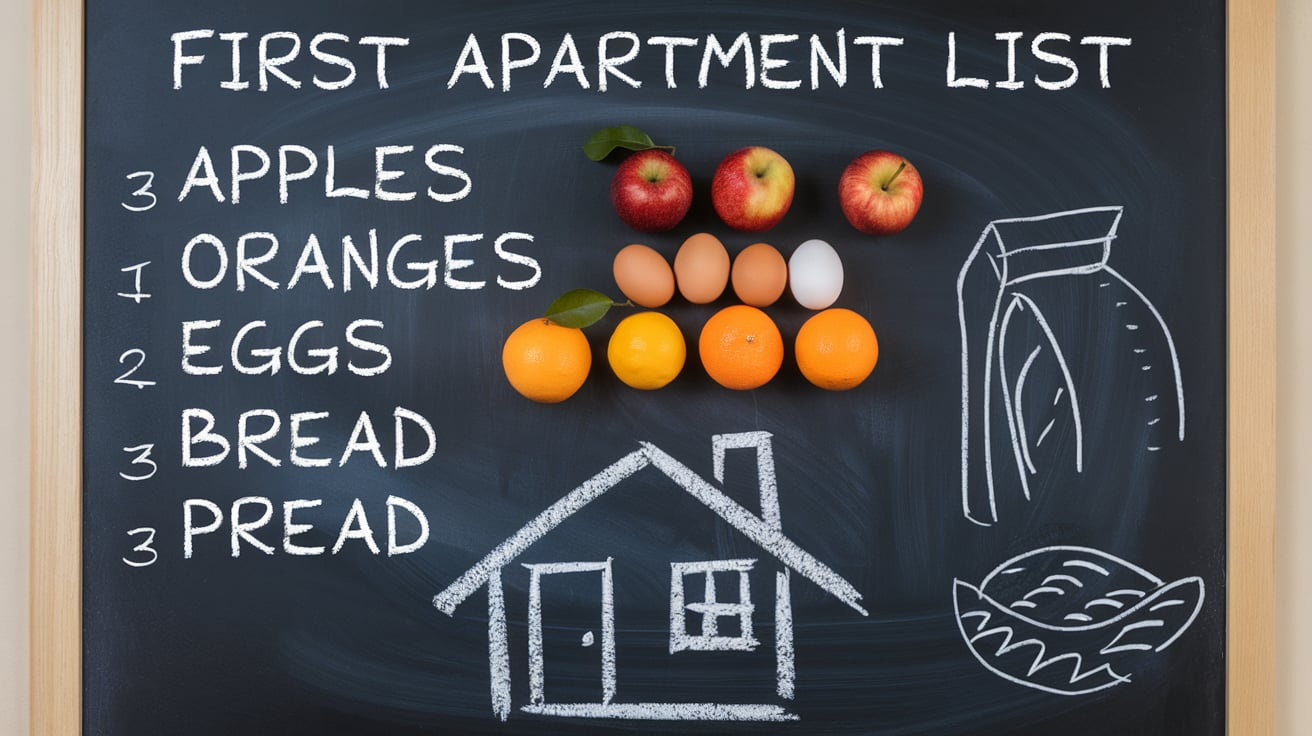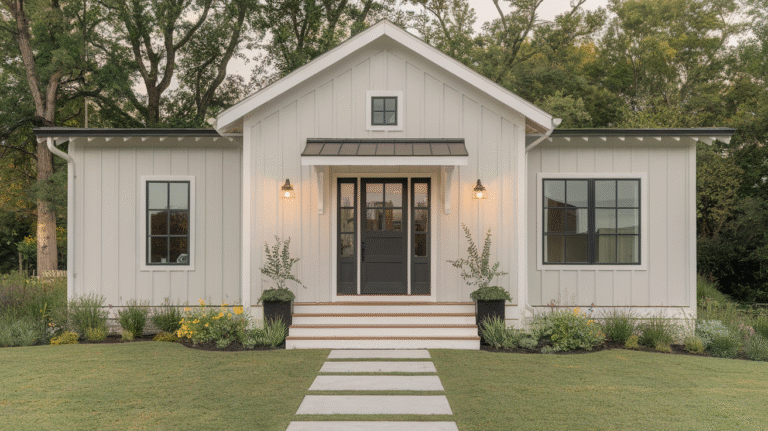28 First Apartment Grocery List Ideas

The First Grocery Run: What You Really Need in Your First Apartment
Moving into your first apartment is equal parts thrill and chaos.
You’ve probably hauled furniture, built IKEA shelves with missing screws, and figured out how to reset a temperamental thermostat.
But here’s the part no one warns you about: your fridge and pantry will be hauntingly empty that first night.
You’ll open the cabinets, expecting a snack, only to find…air.
Let’s fix that.
This is your ultimate first apartment grocery list.
I’m not just tossing generic pantry items at you—I’m giving you the staples that real people actually use when they’re setting up their adulting headquarters for the first time.
I moved into my first apartment with a coffee maker, two spoons, and mustard. You don’t need to repeat that mistake.
1. Eggs
Eggs are the MVP of first apartment living. Scrambled for breakfast, fried on toast for lunch, hard-boiled for snacks—they do it all.
They’re cheap, last a while, and add protein to nearly any meal.
Stat: Americans consume over 279 eggs per person per year—that’s proof they’re essential.
2. Milk or Milk Alternatives
Unless you’re severely lactose-intolerant (and even if you are—hello almond, oat, and soy milk), milk is a must.
For coffee, cereal, cooking, baking, or even just sipping cold with cookies, it’s a staple.
Start small. A half-gallon won’t go bad as quickly as a full one.
3. Bread (and Not Just Any Kind)
Bread is the anchor of a dozen quick meals. Toast with peanut butter? Sandwich? Grilled cheese? Done.
Opt for whole grain or multigrain if you want something healthier and more filling.
4. Peanut Butter
Peanut butter is a life-saver. It doesn’t need refrigeration, it lasts forever, and it’s filling.
Slather it on toast, spoon it out of the jar during a midnight crisis, or stir into oatmeal.
Pro Tip: Buy a jar with a resealable lid and a natural variety if you want to skip added sugars.
5. Cereal or Oatmeal
Breakfast is fast, easy, and cheap with either of these. Cereal feels like childhood; oatmeal feels like adulthood. Either way, you’ll be glad you stocked up.
Oatmeal in bulk is especially cost-effective. Add cinnamon, chopped fruit, or peanut butter for variety.
6. Rice
Rice is the blank canvas of dinner. White, brown, jasmine, or basmati—it goes with stir-fries, curries, chili, or beans.
It lasts months, cooks easily, and you’ll thank yourself on lazy evenings.
7. Pasta
I’ve survived entire semesters on pasta. With just a pot and some boiling water, it turns into dinner. Keep at least one box on hand for emergency comfort meals.
Try rotini or penne—they hold sauces better than spaghetti.
8. Pasta Sauce
Don’t make the rookie mistake of getting pasta and forgetting the sauce. Keep a jar of marinara or Alfredo around.
Even better—add onions, garlic, and frozen veggies to it for a more filling meal.
9. Cheese
Blocks last longer than shredded, but pick what you’ll actually eat. Cheese is a protein boost, a snack, and a pizza topping.
Bonus: Add to eggs, sandwiches, or crackers for a satisfying snack.
10. Butter or Margarine
Cooking without butter is like painting without a brush. You don’t need a giant tub—just a small block or spreadable container will do.
Use it for cooking, toast, pasta, and baking.
11. Cooking Oil (Olive or Canola)
Oil is a must—you’ll need it to sauté, roast, or fry. Olive oil is great for flavor and health; canola is better for high-heat cooking.
Get a medium-size bottle and store in a cool place.
12. Salt and Pepper
You’d be shocked how many new apartments are missing these. Food tastes flat without seasoning. Salt brings out flavor; pepper adds depth.
Invest in grinders for better taste and longer-lasting freshness.
13. Garlic and Onions
These humble ingredients make every dish more flavorful. Sautéed onions and garlic form the base of most great meals.
They’re cheap, keep well in a basket, and instantly make your kitchen smell like a home.
14. Fresh Vegetables
You don’t need to load up, but a few versatile veggies go a long way. Start with:
- Bell peppers (lasts longer)
- Carrots (snack or stir-fry)
- Spinach or kale (throw into eggs or pasta)
- Tomatoes (fresh or canned)
Buy what you’ll actually use in a week.
15. Fresh or Frozen Fruits
Apples, bananas, or frozen berries make great snacks or breakfast additions.
Frozen fruit is excellent for smoothies or oatmeal. Plus, it won’t go bad if you forget about it for a week (or two).
16. Canned Beans
Black beans, kidney beans, chickpeas—these are a first-apartment staple. They’re filling, cheap, and protein-rich. Add to rice, soups, or salads.
Rinse before using to reduce sodium.
17. Canned Soup or Chili
When you don’t have the energy to cook, a can of soup is salvation. Look for low-sodium or protein-rich options.
Keep a couple in your pantry for “nothing-is-going-right” days.
18. Frozen Vegetables
Frozen broccoli, peas, and corn are lifesavers. Steam or stir-fry for a quick side or dinner boost.
They’re cheaper than fresh, last months, and retain almost all their nutrients.
19. Coffee or Tea
Your morning ritual starts here. Whether you’re a pour-over snob or instant coffee realist, get your caffeine fix ready.
Same for tea drinkers—green, herbal, or black teas are great for winding down or waking up.
20. Snacks (Chips, Crackers, Popcorn)
Don’t pretend you won’t snack. Having just a few treats can stop you from ordering late-night food.
Stock small bags of:
- Trail mix
- Granola bars
- Crackers
- Microwave popcorn
21. Flour and Sugar
Even if you’re not baking, these two are handy. Pancakes, mug cakes, thickening sauces—you’ll need them eventually.
Buy small bags if space is limited.
22. Condiments (Ketchup, Mustard, Mayo)
A sandwich without condiments is a sad, dry affair. You don’t need the industrial size, but a squeeze bottle of each will go far.
Also consider:
- Soy sauce
- Hot sauce
- Salad dressing
23. Yogurt
Snack, breakfast, or dessert—yogurt does it all. Pick plain if you want versatility or flavored if you want convenience.
Greek yogurt has more protein and can sub for sour cream in recipes.
24. Meat or Meat Alternatives
Depending on your diet:
- Chicken breasts or thighs (freeze what you don’t use)
- Ground beef or turkey
- Tofu or tempeh
- Plant-based meat substitutes
Protein is key, and these freeze well for long-term use.
25. Baking Powder and Baking Soda
Even if you don’t bake, these are kitchen heroes. They’re used in pancakes, muffins, and even to clean your sink.
Get small containers—you won’t run out anytime soon.
26. Dish Soap and Sponges
Okay, not edible—but you cannot survive without these. Even if you’re using paper plates, there’ll be dishes to clean eventually.
Trust me, I’ve tried skipping it. Didn’t end well.
27. Aluminum Foil and Storage Bags
Leftovers happen. Prepping for lunch happens. Covering a baking tray with foil saves scrubbing.
Storage bags = budget-friendly food storage without fancy containers.
28. Water Bottle or Pitcher
Staying hydrated is critical. Keep a large reusable water bottle or filtered pitcher to avoid buying single-use plastic bottles.
What to Skip on the First Trip
Here’s what you don’t need yet—unless you know you’ll use it:
- Fancy baking supplies (molasses? pastry flour?)
- Bulk anything (no, you won’t eat 10 pounds of rice)
- Every spice under the sun (start with salt, pepper, garlic powder, chili flakes, and cinnamon)
Budget Breakdown: How Much Should You Spend?
According to the USDA, a moderate monthly grocery budget for one person is between $250–$350.
For your first trip, expect to spend around $150–$200 if you’re buying basics, pantry items, and a few extras.
This includes:
- Pantry and fridge staples
- A couple indulgences (hello, chocolate)
- Basic cleaning items
Personal Tip: Don’t Shop Hungry
You’ll fill your cart with random snacks, questionable frozen items, and probably forget toilet paper. Eat a snack first, then shop smart.
Final Thought: Grocery List = Independence
Stocking your first apartment is a quiet rite of passage. No one claps.
No one cheers. But that first morning when you make eggs and toast in your kitchen, you’ll feel it: you’ve got this.
You don’t need a gourmet pantry or a TikTok-organized fridge. Just real food, simple ingredients, and a few comforts that say: “This is my space now.”




